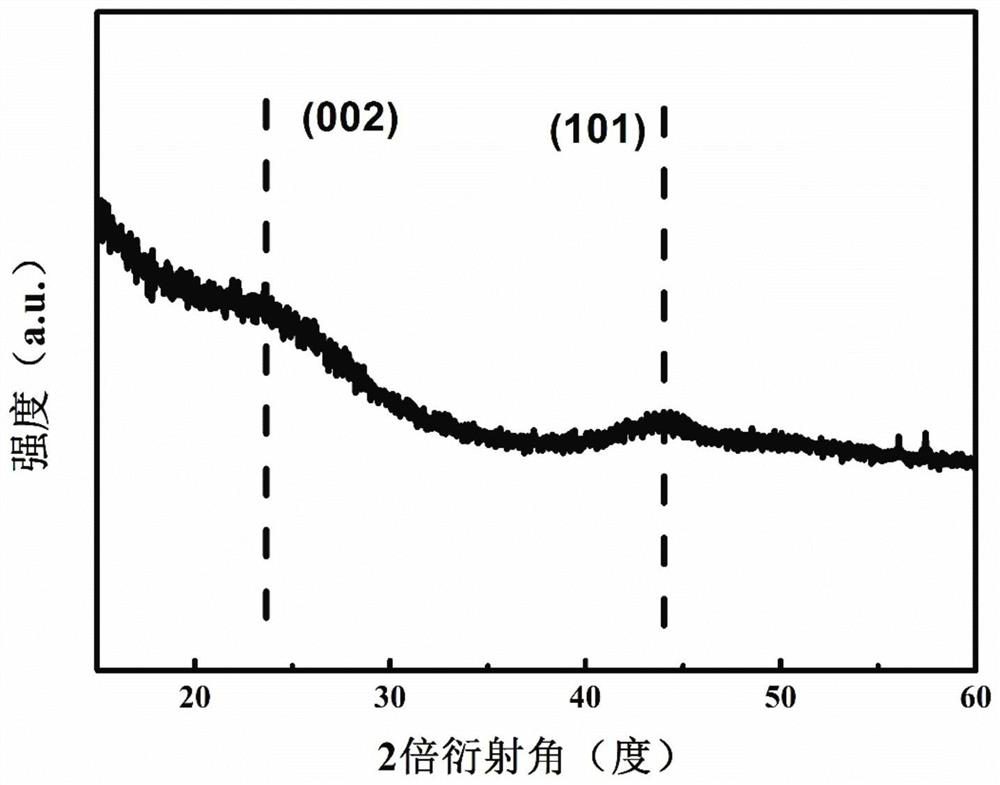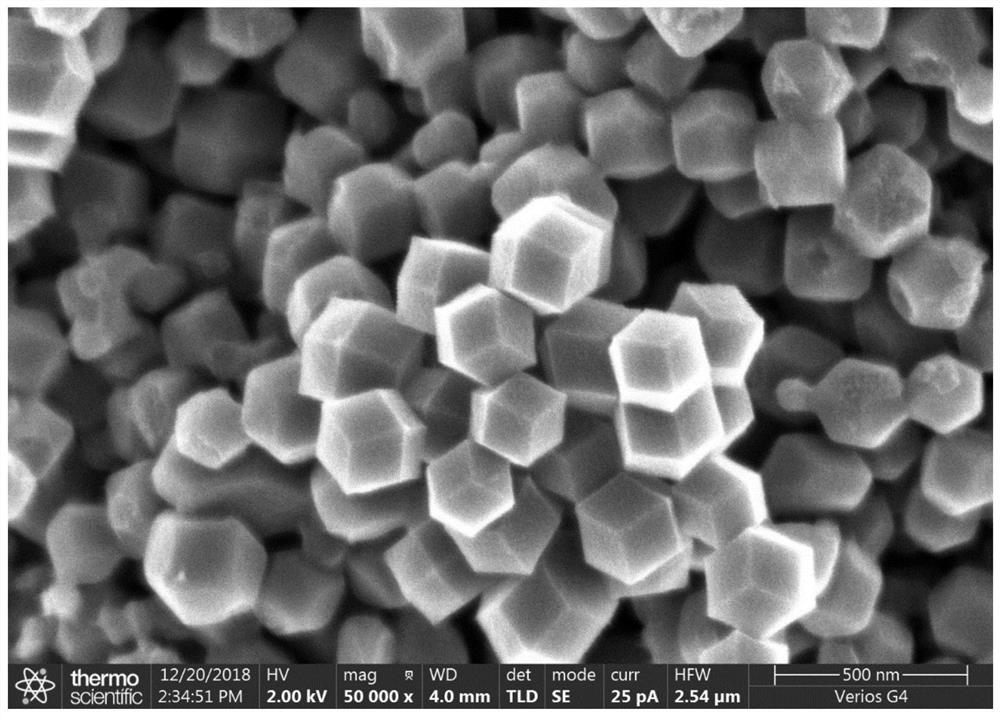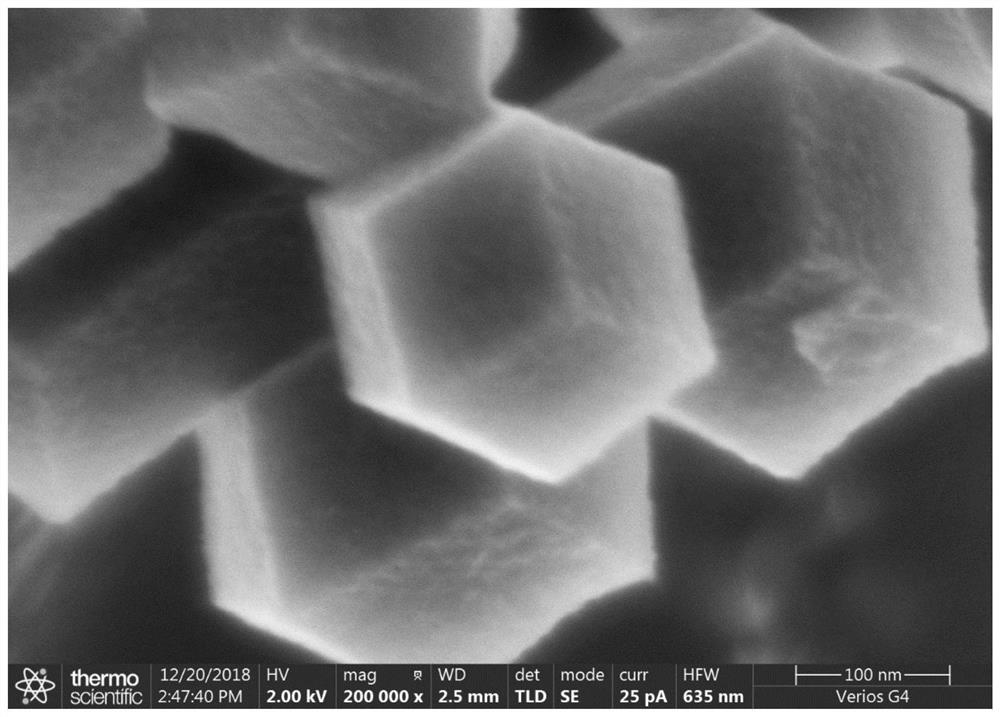Preparation method and application of carbon material rich in topological defects obtained through high-temperature ammonia treatment
A carbon material and ammonia treatment technology, applied in the direction of carbon preparation/purification, separation methods, chemical instruments and methods, etc., can solve the problems of expensive catalyst, poor selectivity, poor stability, etc., and achieve high-efficiency carbon dioxide electroreduction catalytic activity, The preparation method is simple and easy, and the effect of high selectivity
- Summary
- Abstract
- Description
- Claims
- Application Information
AI Technical Summary
Problems solved by technology
Method used
Image
Examples
Embodiment 1
[0040] In this example, the carbon material rich in topological defects is prepared as follows:
[0041] (1) Preparation of ZIF-8 precursor
[0042] 4.05g zinc nitrate hexahydrate and 2.63g 2-methylimidazole were dissolved in 200ml of methanol respectively, the two solutions obtained were mixed and stirred for 5 minutes, then left to stand at room temperature for 24 hours, finally centrifuged and washed and separated, Dry in an oven at 60°C for 12 hours.
[0043] (2) Heat treatment in an inert gas atmosphere
[0044] The ZIF-8 precursor obtained in step (1) was put into a tube furnace, heated to 800°C at a rate of 5°C / min after argon flow for 2 hours, kept for 2 hours, and then cooled down to room temperature naturally.
[0045] (3) Acid etching cleaning
[0046] The product obtained in step (2) was washed with 36% hydrochloric acid and centrifuged three times, then washed with deionized water until neutral, and finally dried in an oven at 60° C. for 12 hours.
[0047] (4)...
Embodiment 2
[0070] In this embodiment, the preparation of the carbon dioxide electrochemical reduction catalyst is as follows:
[0071] (1) Preparation of ZIF-8 precursor
[0072] Same as step (1) in Example 1.
[0073] (2) Heat treatment in an inert gas atmosphere
[0074] Same as step (2) in Example 1.
[0075] (3) Acid etching cleaning
[0076] Same as step (3) in Example 1.
[0077] (4) Ammonia heat treatment
[0078] The product obtained in step (3) was put into a tube furnace, raised to 900°C at a rate of 10°C / min in 100% ammonia gas, kept for 1 hour, and then cooled naturally to room temperature.
Embodiment 3
[0080] In this embodiment, the preparation of the carbon dioxide electrochemical reduction catalyst is as follows:
[0081] (1) Preparation of ZIF-8 precursor
[0082] Same as step (1) in Example 1.
[0083] (2) Heat treatment in an inert gas atmosphere
[0084] Same as step (2) in Example 1.
[0085] (3) Acid etching cleaning
[0086] Same as step (3) in Example 1.
[0087] (4) Ammonia heat treatment
[0088] The product obtained in step (3) was put into a tube furnace, raised to 800°C at a rate of 10°C / min in 100% ammonia gas, kept for 1 hour, and then cooled naturally to room temperature.
[0089] According to the XPS of the carbon material obtained in the above-mentioned comparative examples and examples 1-3, the nitrogen content therein is as follows:
[0090]
PUM
| Property | Measurement | Unit |
|---|---|---|
| particle diameter | aaaaa | aaaaa |
Abstract
Description
Claims
Application Information
 Login to View More
Login to View More - R&D
- Intellectual Property
- Life Sciences
- Materials
- Tech Scout
- Unparalleled Data Quality
- Higher Quality Content
- 60% Fewer Hallucinations
Browse by: Latest US Patents, China's latest patents, Technical Efficacy Thesaurus, Application Domain, Technology Topic, Popular Technical Reports.
© 2025 PatSnap. All rights reserved.Legal|Privacy policy|Modern Slavery Act Transparency Statement|Sitemap|About US| Contact US: help@patsnap.com



